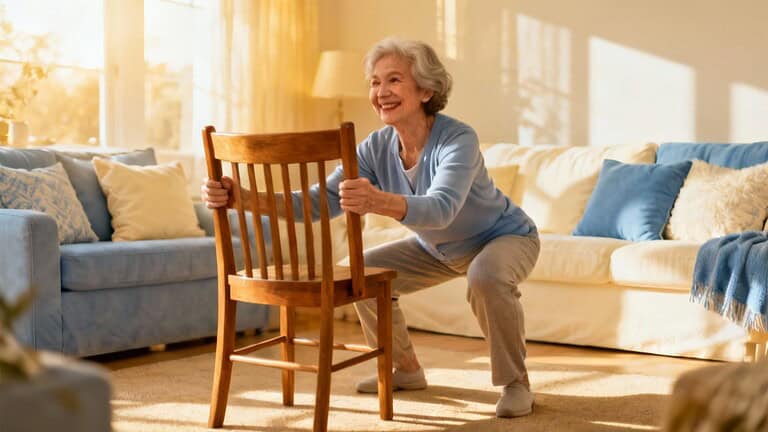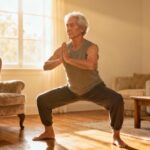As we age, staying active and strong becomes essential for maintaining independence and enjoying life to the fullest. Simple exercises like squats can make a remarkable difference, helping seniors build strength, improve balance, and reduce the risk of falls.
What Are Squats and Why Do They Matter?
Squats are a natural movement that involves bending your knees and hips to lower your body, then rising back up. Think of sitting down and standing up from a chair—it’s a squat in action.
For seniors, this everyday motion becomes a powerful exercise. It strengthens the legs, hips, and core, making daily tasks easier and safer.
Key Health Benefits of Squats for Seniors
Regular squatting offers a wide range of advantages that support healthy aging. Here are the top benefits:
- Builds lower body strength: Squats target muscles in your thighs, hips, and glutes, which are crucial for walking and climbing stairs.
- Enhances balance and stability: By training your body to stay steady, squats reduce the risk of falls and improve posture.
- Supports joint health: Gentle squatting lubricates joints, easing stiffness and promoting flexibility.
- Boosts independence: Stronger legs make it easier to perform daily activities like getting out of a chair or picking up objects.
- Improves mental well-being: Physical activity releases endorphins, lifting your mood and boosting confidence.
Safety Tips Before You Start
Before beginning any new exercise, it’s important to prioritize safety. Follow these guidelines to squat with confidence:
- Consult your doctor or physical therapist, especially if you have chronic conditions.
- Choose a clutter-free area with non-slip flooring and use a sturdy chair or wall for support.
- Warm up with light movements like marching in place or arm circles.
- Listen to your body and stop if you feel pain or dizziness.
- Start slowly with just a few repetitions and focus on proper form.
Step-by-Step Guide to Safe Chair Squats
Chair squats are an excellent starting point for seniors. Here’s how to do them correctly:
- Place a sturdy chair against a wall and stand in front of it with feet shoulder-width apart.
- Keep your chest lifted and back straight, extending your arms forward for balance.
- Slowly push your hips back and bend your knees to lower yourself toward the chair.
- Gently touch the chair with your hips, then press through your heels to stand back up.
- Breathe in as you lower down and out as you rise up.
Begin with 5-10 reps once or twice a day, and increase as you feel stronger.
How to Make Squats a Daily Habit
Consistency is key to reaping the benefits of squats. Try these simple ideas to integrate them into your routine:
- Do a few squats after brushing your teeth each morning.
- Use the kitchen counter for support while waiting for water to boil.
- Stand up and squat during TV commercial breaks.
- Set a reminder on your phone or leave a note in a visible spot.
Common Mistakes to Avoid
To squat safely, steer clear of these errors:
- Avoid going too deep too soon—partial squats are fine.
- Keep your knees aligned with your toes, not collapsing inward.
- Maintain a straight back instead of rounding or leaning forward.
- Breathe steadily and don’t hold your breath.
- Move slowly and controlled, not rushing through repetitions.
Progressing Your Squat Routine
As you gain strength, you can gently challenge yourself with these variations:
- Increase repetitions or add another set of squats.
- Hold light weights like water bottles close to your chest.
- Use a resistance band around your thighs to activate outer leg muscles.
- Try wall sits by leaning against a wall and holding a seated position.
- Add small movements like heel lifts between squats for extra mobility.
Real-Life Inspiration: Susan’s Story
At 76, Susan felt her independence slipping as everyday tasks became harder. After her doctor suggested chair squats, she started with just five a day.
Within weeks, she noticed she could rise from her chair without pushing off. Now, Susan does 15 squats daily and enjoys gardening and dancing again. Her journey shows it’s never too late to regain strength and confidence.
Embrace Strength and Independence
Squats are more than just an exercise—they’re a pathway to a vibrant, independent life. By starting small and staying consistent, you can build the strength needed to tackle daily activities with ease.
Remember, every squat you do is a step toward greater mobility and confidence. So grab a chair, take a deep breath, and begin your journey to a stronger, more active you.








